Zone
Crash of a Socata TBM-700 in Hollywood
Date & Time:
Oct 12, 2011 at 1334 LT
Registration:
N37SV
Survivors:
Yes
Schedule:
North Perry - North Perry
MSN:
441
YOM:
2008
Flight number:
SC332
Crew on board:
2
Crew fatalities:
Pax on board:
0
Pax fatalities:
Other fatalities:
Total fatalities:
0
Captain / Total hours on type:
4053.00
Copilot / Total hours on type:
5
Aircraft flight hours:
593
Circumstances:
The airplane, registered to SV Leasing Company of Florida, operated by SOCATA North America, Inc., sustained substantial damage during a forced landing on a highway near Hollywood, Florida, following total loss of engine power. Visual meteorological conditions prevailed at the time and an instrument flight rules (IFR) flight plan was filed for the 14 Code of Federal Regulations (CFR) Part 91 maintenance test flight from North Perry Airport (HWO), Hollywood, Florida. The airline transport pilot and pilot-rated other crew member sustained minor injuries; there were no ground injuries. The flight originated from HWO about 1216. The purpose of the flight was a maintenance test flight following a 600 hour and annual inspection. According to the right front seat occupant, in anticipation of the flight, he checked the fuel load by applying electrical power and noted the G1000 indicated the left fuel tank had approximately 36 gallons while the right fuel tank had approximately 108 gallons. In an effort to balance the fuel load with the indication of the right fuel tank, he added 72.4 gallons of fuel to the left fuel tank. At the start of the data recorded by the G1000 for the accident flight, the recorded capacity in the left fuel tank was approximately 105 gallons while the amount in the right fuel tank was approximately 108 gallons. The PIC reported that because of the fuel load on-board, he could not see the level of fuel in the tanks; therefore, he did not visually check the fuel tanks. By cockpit indication, the left tank had approximately 105 gallons and the right tank had approximately 108 gallons. The flight departed HWO, but he could not recall the fuel selector position beneath the thrust lever quadrant. He further stated that the fuel selector switch on the overhead panel was in the "auto" position. After takeoff, the flight climbed to flight level (FL) 280, and levelled off at that altitude about 20 minutes after takeoff. While at that altitude they received a "Fuel Low R" amber warning CAS message on the G1000. He checked the right fuel gauge which indicated 98 gallons, and confirmed that the fuel selector automatically switched to the left tank. After about 10 seconds the amber warning CAS message went out. He attributed the annunciation to be associated with a failure or malfunction of the sensor, and told the mechanic to write this issue down so it could be replaced after the flight. The flight continued and they received an amber warning CAS message, "Fuel Unbalance" which the right fuel tank had more fuel so he switched the fuel selector to supply fuel from the right tank to the engine. The G1000 indicates they remained at that altitude for approximately 8 minutes. He then initiated a quick descent to 10,000 feet mean sea level (msl) and during the descent accelerated to Vmo to test the aural warning horn. They descended to and maintained 10,000 feet msl for about 15 minutes and at an unknown time, they received an amber warning CAS message "Fuel Low R." Once again he checked the right fuel gauge which indicated it had 92 gallons and confirmed that the fuel tank selector automatically switched to the left tank. After about 10 seconds the CAS message went out. Either just before or during descent to 4,000 feet, they received an amber CAS message "Fuel Unbalance." Because the right fuel gauge indicated the fullest tank was the right tank, he switched the fuel selector to supply fuel to the engine from the right tank. The flight proceeded to the Opa-Locka Executive Airport, where he executed an ILS approach which terminated with a low approach. The pilot cancelled the IFR clearance and proceeded VFR towards HWO. While in contact with the HWO air traffic control tower, the flight was cleared to join the left downwind for runway 27L. Upon entering the downwind leg they received another amber CAS message "Fuel Unbalance" and at this time the left fuel gauge indicated 55 gallons while the right fuel gauge indicated 74 gallons. Because he intended on landing within a few minutes, he put the fuel selector to the manual position and switched to the fullest (right) tank. Established on final approach to runway 27L at HWO with the gear down, flaps set to landing, and minimum speed requested by air traffic for separation (85 knots indicated airspeed). When the flight was at 800 feet, the red warning CAS message "Fuel Press" illuminated and the right seat occupant with his permission moved the auxiliary fuel boost pump switch from "Auto" to "On" while he, PIC manually moved the fuel selector to the left tank. In an effort to restore engine power he pushed the power lever and used the manual over-ride but with no change. Assured that the engine had quit, he put the condition lever to cutoff, the starter switch on, and then the condition lever to "Hi-Idle" attempting to perform an airstart. At 1332:42, a flight crew member of the airplane advised the HWO ATCT, "…just lost the engine"; however, the controller did not reply. The PIC stated that he looked to his left and noticed a clear area on part of the turnpike, so he banked left, and in anticipation of the forced landing, placed the power lever to idle, the condition lever to cutoff, the fuel tank selector to off, and put the electrical gang bar down to secure the airplane's electrical system. He elected to retract the landing gear in an effort to shorten the landing distance. The right front seat occupant reported that the airplane was landed in a southerly direction in the northbound lanes of the Florida Turnpike. There were no ground injuries.
Probable cause:
The pilot’s failure to terminate the flight after observing multiple conflicting errors associated with the inaccurate right fuel quantity indication. Contributing to the accident were the total loss of engine power due to fuel starvation from the right tank, the inadequate manufacturing of the right fuel gauge electrical harness, and failure of maintenance personnel to recognize and evaluate the reason for the changing fuel level in the right fuel tank.
Final Report:
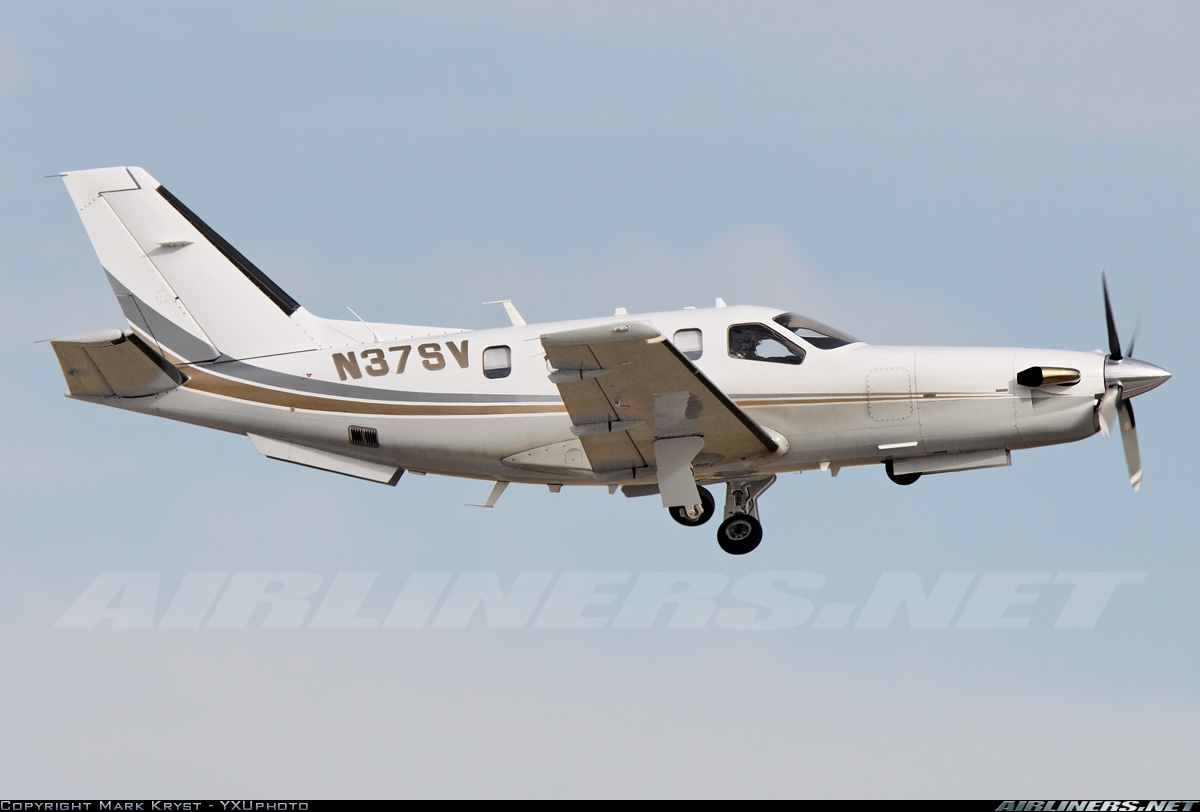
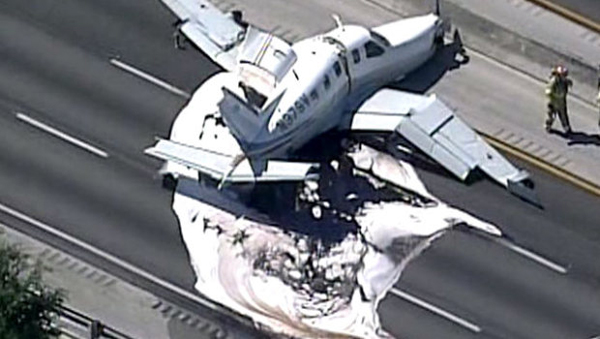
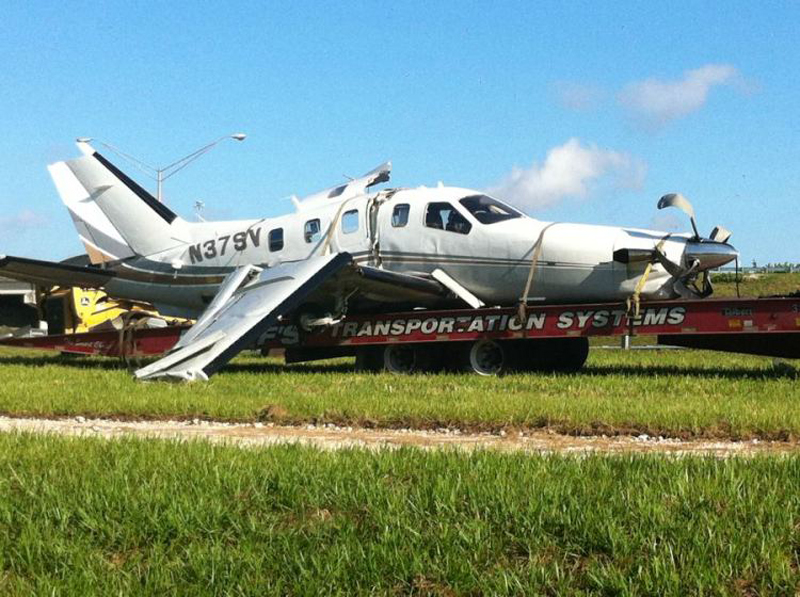
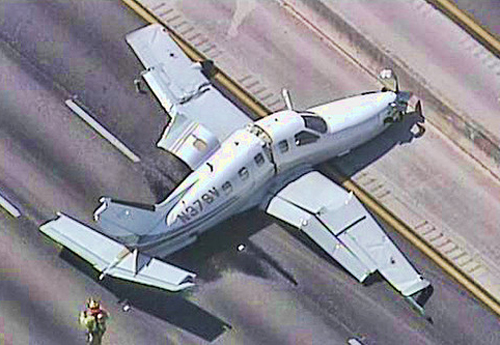
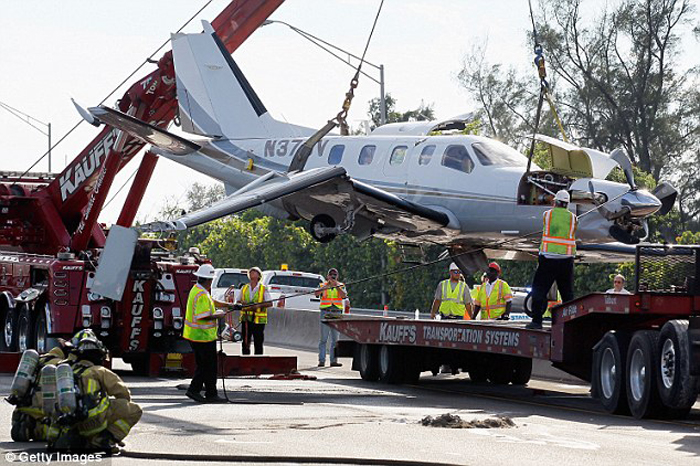
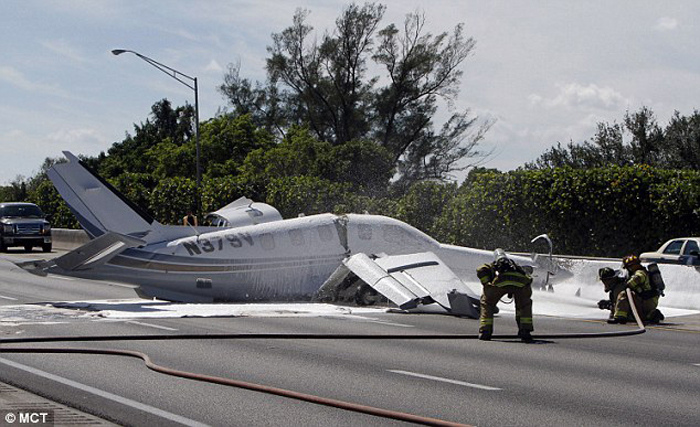
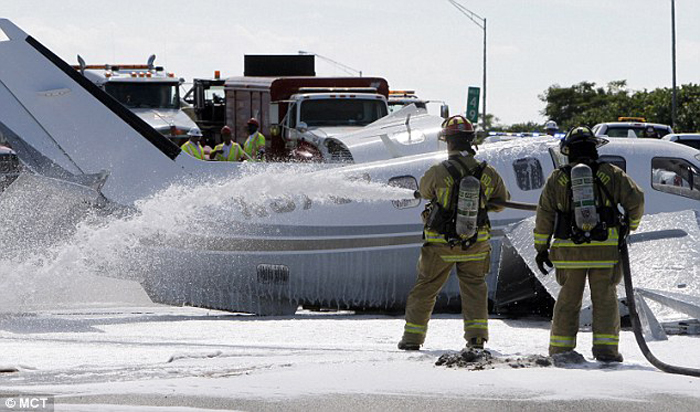


Crash of a Beechcraft 65-A90 King Air off Port-de-Paix
Date & Time:
Nov 29, 1998 at 0815 LT
Registration:
N171TE
Survivors:
Yes
Schedule:
North Perry – Cap Haïtien
MSN:
LJ-180
YOM:
1966
Crew on board:
1
Crew fatalities:
Pax on board:
0
Pax fatalities:
Other fatalities:
Total fatalities:
0
Aircraft flight hours:
10119
Circumstances:
According to the pilot, during pre-flight examination of the airplane performed the evening prior to the flight, the fuel gauges read 'around' 3/4 full. Visual examination of the tanks by the pilot revealed the tanks were not full but he believed the quantity was more than adequate to conduct his flight. While at 17000 feet MSL and approximately 60 miles from his destination, both the left engine and right engine suffered fuel exhaustion. After declaring an emergency, the pilot ditched the airplane in the Atlantic Ocean about ten miles off the coast of Isle De La Tortue, Haiti. The pilot received minor injuries and was rescued by the United States Coast Guard at 1730 the same day. Based on data obtained from the Raytheon Aircraft Company and 3/4 full fuel tanks, the total available flight time for this flight was approximately 4.00 hours. The actual flight time for this flight was 3.25 hours.
Probable cause:
Inadequate preflight planning/preparation by the pilot, which resulted in fuel exhaustion due to an inadequate supply of fuel. A factor was the terrain ( water).
Final Report:
Crash of a Cessna 402B in North Perry: 2 killed
Date & Time:
Aug 27, 1992 at 1030 LT
Registration:
N6AT
Survivors:
Yes
Schedule:
North Perry - Homestead
MSN:
402B-0539
YOM:
1973
Crew on board:
1
Crew fatalities:
Pax on board:
2
Pax fatalities:
Other fatalities:
Total fatalities:
2
Captain / Total hours on type:
56.00
Aircraft flight hours:
4244
Circumstances:
The aircraft was engaged in a voluntary relief flight for the victims of hurricane Andrew. All of the seats had been removed from the cabin section of the aircraft. There were no weight scales used in the loading of the cargo onto the aircraft. The private pilot did not have a multi engine rating on his pilot certificate. The aircraft crashed into a residence one half mile from the departure end of the runway. Witnesses stated that the aircraft used most of the available runway prior to liftoff. After liftoff, the aircraft appeared to climb in an unstable condition prior to the accident. Investigation revealed that the aircraft was 1112.2 pounds over the maximum gross takeoff weight at the time of the departure. All three occupants were killed.
Probable cause:
The failure of the pilot to perform preflight planning in that the weight and balance of the aircraft were exceeded. The pilot's lack of experience in the type of aircraft and lack of multi engine certification.
Final Report:
Crash of a Piper PA-61 Aerostar (Ted Smith 601P) in North Perry: 3 killed
Date & Time:
Aug 25, 1988 at 1530 LT
Registration:
N6069W
Survivors:
No
MSN:
61-0676-7963318
YOM:
1979
Crew on board:
2
Crew fatalities:
Pax on board:
1
Pax fatalities:
Other fatalities:
Total fatalities:
3
Captain / Total hours on type:
50.00
Circumstances:
Witnesses stated that the aircraft used almost the entire length of the runway during the ground run. After rotation and gear retraction, it continued to climb in a nose high attitude to approximately 100-150 feet, then it started an approximately 20° bank to the right until it hit power lines and crashed into the top of a printing shop about 3/4 mile from the airport. Witnesses employed at the airport stated that the aircraft had been having undetermined problems with the right engine for a few weeks prior to the accident, but was still being flown and the right engine running extremely rough. All three occupants were killed.
Probable cause:
Occurrence #1: loss of engine power
Phase of operation: takeoff - initial climb
Findings
1. (c) engine assembly - undetermined
2. (c) operation with known deficiencies in equipment - attempted - pilot in command
3. Propeller feathering - performed
----------
Occurrence #2: forced landing
Phase of operation: descent - emergency
----------
Occurrence #3: in flight collision with object
Phase of operation: maneuvering - turn to landing area (emergency)
Findings
4. (f) object - wire, transmission
5. (f) object - building (nonresidential)
Phase of operation: takeoff - initial climb
Findings
1. (c) engine assembly - undetermined
2. (c) operation with known deficiencies in equipment - attempted - pilot in command
3. Propeller feathering - performed
----------
Occurrence #2: forced landing
Phase of operation: descent - emergency
----------
Occurrence #3: in flight collision with object
Phase of operation: maneuvering - turn to landing area (emergency)
Findings
4. (f) object - wire, transmission
5. (f) object - building (nonresidential)
Final Report:
Crash of a Learjet 24 in North Perry
Date & Time:
May 7, 1986 at 1800 LT
Registration:
N55NJ
Survivors:
Yes
Schedule:
North Perry - North Perry
MSN:
24-162
YOM:
1968
Crew on board:
2
Crew fatalities:
Pax on board:
2
Pax fatalities:
Other fatalities:
Total fatalities:
0
Captain / Total hours on type:
2367.00
Circumstances:
The pilot stated he made a normal approach and landing but on rollout discovered he had no brakes. The aircraft traveled off the left side of the runway and collided with a fence surrounding a ballpark. Post crash examination of the hydraulic system revealed that the hydraulic reservoir was empty and the main accumulator and the thrust reverser accumulator had no air charge. All four occupants escaped uninjured.
Probable cause:
Occurrence #1: airframe/component/system failure/malfunction
Phase of operation: landing - roll
Findings
1. (c) hydraulic system, reservoir - low level
2. (c) aircraft preflight - poor - pilot in command
3. (c) maintenance, service of aircraft/equipment - improper - other maintenance personnel
----------
Occurrence #2: overrun
Phase of operation: landing - roll
----------
Occurrence #3: on ground/water collision with object
Phase of operation: landing - roll
Findings
4. Object - fence
Phase of operation: landing - roll
Findings
1. (c) hydraulic system, reservoir - low level
2. (c) aircraft preflight - poor - pilot in command
3. (c) maintenance, service of aircraft/equipment - improper - other maintenance personnel
----------
Occurrence #2: overrun
Phase of operation: landing - roll
----------
Occurrence #3: on ground/water collision with object
Phase of operation: landing - roll
Findings
4. Object - fence
Final Report:
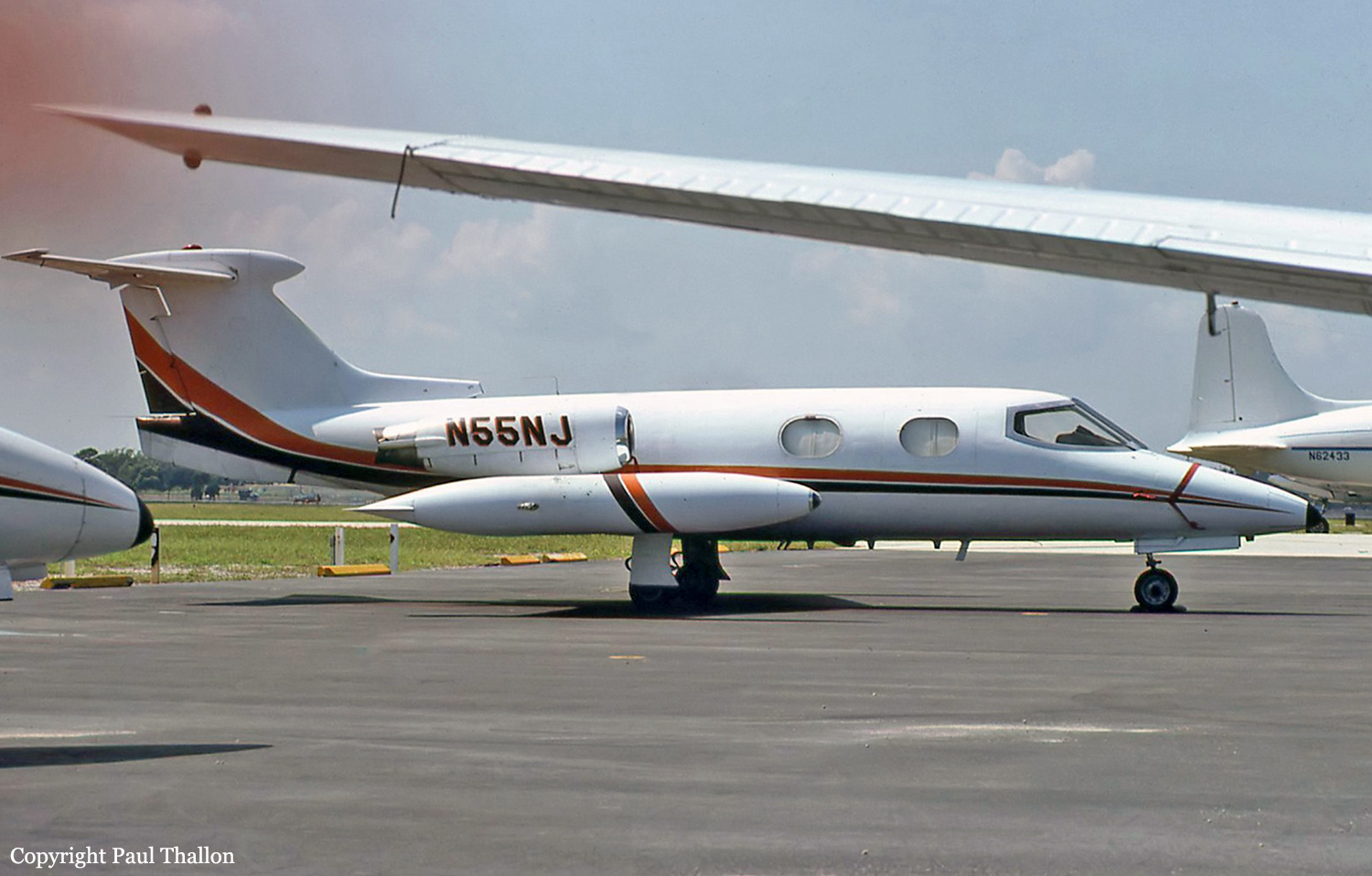

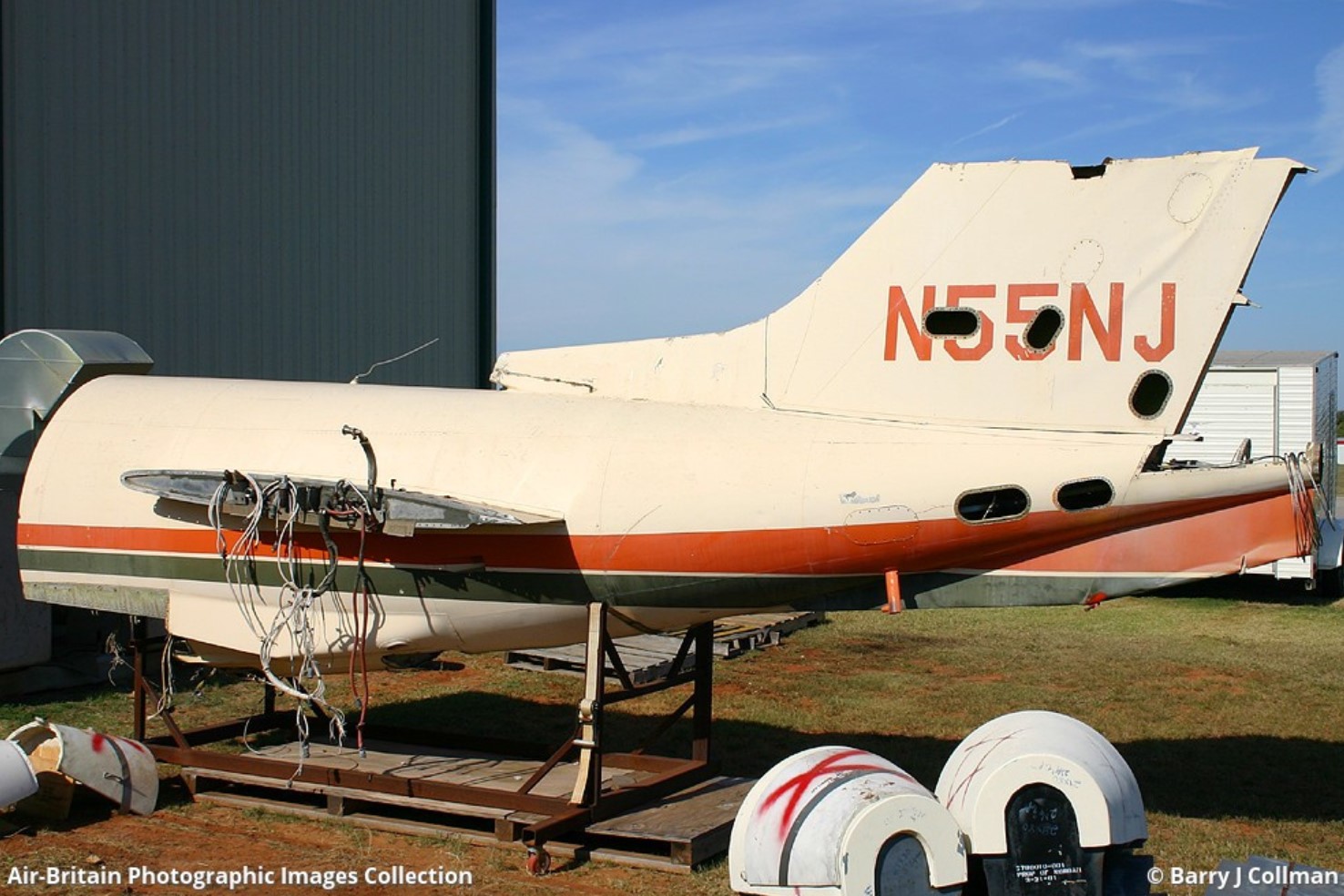
Crash of a Rockwell Grand Commander 680 in Titusville: 3 killed
Date & Time:
May 12, 1983 at 1205 LT
Registration:
N6880S
Survivors:
No
Schedule:
Eufaula - North Perry
MSN:
680-0403-80
YOM:
1956
Crew on board:
1
Crew fatalities:
Pax on board:
2
Pax fatalities:
Other fatalities:
Total fatalities:
3
Circumstances:
Witnesses saw the aircraft briefly before it crashed. One witness saw the aircraft flying toward a dark cloud at an unknown altitude, but too high to fly under it. Shortly thereafter, he heard the engine noise increase and decrease, then increase until it was loud. He then heard what sounded like an explosion. He did not see the crash, but saw smoke from the crash site. A woman close to the crash site said the weather was very windy, heavy rain was falling and visibility was restricted. An examination of the wreckage revealed the outboard wing panels had failed from positive overloads and the left horizontal stabilizer had failed downward. These parts were found 3/4 to 1 mile from the main wreckage. Prior to the flight, a passenger, who paid for fuel and minor maintenance, said the purpose of the flight was for surveying. However, no surveying equipment was on board. Sheriff personnel said the aircraft was under surveillance for an illegal operation.
Probable cause:
Occurrence #1: in flight encounter with weather
Phase of operation: cruise
Findings
1. (f) judgment - poor - pilot in command
2. (f) qualification - pilot in command
3. (c) flight into known adverse weather - initiated - pilot in command
4. (f) weather condition - thunderstorm
5. (f) weather condition - turbulence(thunderstorms)
6. (c) VFR flight into IMC - continued - pilot in command
7. (f) overconfidence in personal ability - pilot in command
----------
Occurrence #2: loss of control - in flight
Phase of operation: cruise
Findings
8. (c) aircraft handling - not maintained - pilot in command
9. (c) spatial disorientation - pilot in command
10. (f) lack of total instrument time - pilot in command
----------
Occurrence #3: airframe/component/system failure/malfunction
Phase of operation: descent - uncontrolled
Findings
11. (c) design stress limits of aircraft - exceeded - pilot in command
12. Wing - overload
13. Wing - separation
14. Horizontal stabilizer surface - overload
15. Horizontal stabilizer surface - separation
----------
Occurrence #4: in flight collision with terrain/water
Phase of operation: descent - uncontrolled
Phase of operation: cruise
Findings
1. (f) judgment - poor - pilot in command
2. (f) qualification - pilot in command
3. (c) flight into known adverse weather - initiated - pilot in command
4. (f) weather condition - thunderstorm
5. (f) weather condition - turbulence(thunderstorms)
6. (c) VFR flight into IMC - continued - pilot in command
7. (f) overconfidence in personal ability - pilot in command
----------
Occurrence #2: loss of control - in flight
Phase of operation: cruise
Findings
8. (c) aircraft handling - not maintained - pilot in command
9. (c) spatial disorientation - pilot in command
10. (f) lack of total instrument time - pilot in command
----------
Occurrence #3: airframe/component/system failure/malfunction
Phase of operation: descent - uncontrolled
Findings
11. (c) design stress limits of aircraft - exceeded - pilot in command
12. Wing - overload
13. Wing - separation
14. Horizontal stabilizer surface - overload
15. Horizontal stabilizer surface - separation
----------
Occurrence #4: in flight collision with terrain/water
Phase of operation: descent - uncontrolled
Final Report:
Crash of a Beechcraft G18S in North Perry
Date & Time:
Apr 14, 1983 at 1508 LT
Registration:
N444PV
Survivors:
Yes
Schedule:
North Perry – Walker Cay
MSN:
BA-598
YOM:
1962
Crew on board:
1
Crew fatalities:
Pax on board:
0
Pax fatalities:
Other fatalities:
Total fatalities:
0
Captain / Total hours on type:
800.00
Aircraft flight hours:
5463
Circumstances:
The pilot stated that start, taxi and takeoff were normal until after he raised the gear handle and the aircraft was climbing thru approximately 150 to 200 feet agl. At that time, he noticed that the left engine rpm was decaying. There was insufficient runway remaining to abort, so he elected to feather the left engine and continue the takeoff. The left prop stopped rotating before it feathered. With additional drag from the left prop, the aircraft would not climb or maintain level flight. The pilot was able to fly the aircraft over buildings and other obstacles (up to 75 feet tall) near the airport boundary. Just beyond these obstacles, the aircraft struck trees and crashed in a wooded area. There was a small post-impact fire near the accessory section of the right engine. An exam and teardown of the left engine revealed that an impeller shaft bearing, Pratt & Whitney part number 288943, had failed and allowed the impeller to rub against the diffuser. No other preimpact failures were found. The pilot, sole on board, was slightly injured.
Probable cause:
Occurrence #1: loss of engine power(total) - mech failure/malf
Phase of operation: takeoff - initial climb
Findings
1. (c) engine assembly,blower/impeller/integral supercharger - failure,total
----------
Occurrence #2: forced landing
Phase of operation: landing - flare/touchdown
Findings
2. (f) propeller feathering - not possible - pilot in command
----------
Occurrence #3: in flight collision with object
Phase of operation: landing - flare/touchdown
Findings
3. (f) terrain condition - none suitable
4. (f) terrain condition - high obstruction(s)
5. (f) object - tree(s)
----------
Occurrence #4: in flight collision with terrain/water
Phase of operation: descent - uncontrolled
Phase of operation: takeoff - initial climb
Findings
1. (c) engine assembly,blower/impeller/integral supercharger - failure,total
----------
Occurrence #2: forced landing
Phase of operation: landing - flare/touchdown
Findings
2. (f) propeller feathering - not possible - pilot in command
----------
Occurrence #3: in flight collision with object
Phase of operation: landing - flare/touchdown
Findings
3. (f) terrain condition - none suitable
4. (f) terrain condition - high obstruction(s)
5. (f) object - tree(s)
----------
Occurrence #4: in flight collision with terrain/water
Phase of operation: descent - uncontrolled
Final Report:
Crash of a Beechcraft D18S in North Perry: 3 killed
Date & Time:
Sep 23, 1979 at 1116 LT
Registration:
N516PA
Survivors:
No
MSN:
A-763
YOM:
1952
Crew on board:
2
Crew fatalities:
Pax on board:
1
Pax fatalities:
Other fatalities:
Total fatalities:
6
Circumstances:
Shortly after takeoff from North Perry Airport, while in initial climb, the airplane lost height and crashed in flames near the runway end. The aircraft was destroyed by a post crash fire and all three occupants were killed.
Probable cause:
Uncontrolled collision with ground during initial climb due to inadequate preflight preparation on part of the crew. The following contributing factors were reported:
- Improperly loaded aircraft,
- Estimated 150 lbs over max gross weight and approximately 3 inches aft of rear CofG limit at takeoff.
- Improperly loaded aircraft,
- Estimated 150 lbs over max gross weight and approximately 3 inches aft of rear CofG limit at takeoff.
Final Report:

